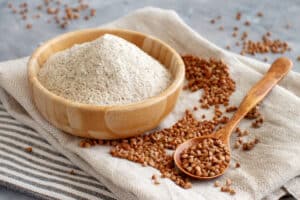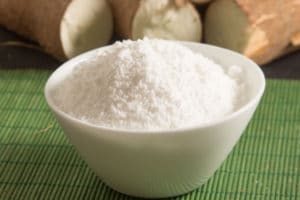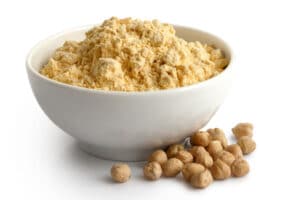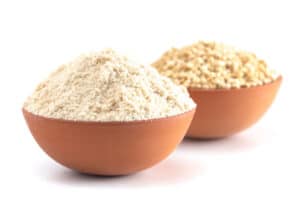Sometimes, one ingredient is all it takes to transform a decent meal into a dish to die for. While it may not be a common constituent of many meals, espresso powder is truly exceptional.
Simply put, espresso powder is dried and processed coffee that has been crushed into granules that easily dissolve into a liquid. Depending on the brand, espresso usually has a bitter taste that highlights that of chocolate and adds flavor to savory recipes.
However, if a recipe asks for espresso powder and you don’t have any on hand, you can still get the desired flavor by using one of our espresso powder substitutes.
The best espresso powder substitutes are instant coffee powder, natural cocoa powder, brewed coffee, ground espresso, brewed espresso, and Dutch-processed cocoa powder. Now let’s learn more about each one.
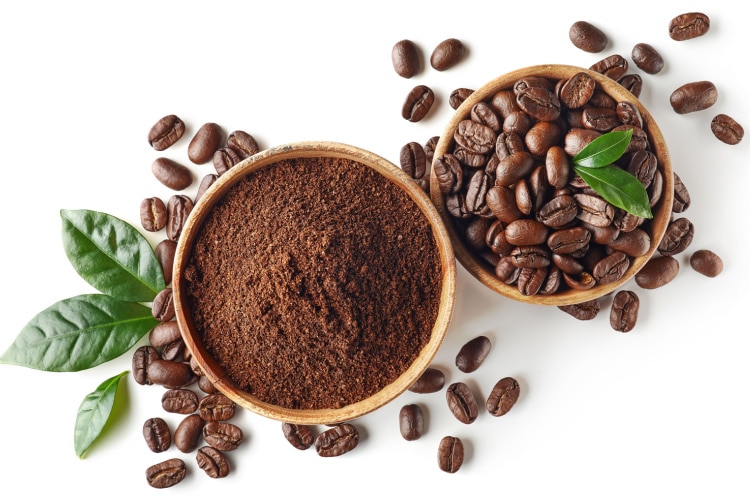
Espresso Powder Substitutes: Nutritional Value & Cooking Ratio
| Substitute (1 tsp) | Calories | Fat | Carb | Protein | Fiber | Ratio |
| Instant Coffee Powder | 2 | 0g | 0.37g | 0.11g | 0g | 1:1 |
| Natural Cocoa Powder | 4 | 0.25g | 0.98g | 0.35g | 0.6g | 1:1 |
| Brewed Coffee | 4 | 0g | 0.76g | 0.12g | 0g | 1:1 |
| Ground Espresso | 5 | 0g | 1g | 0g | 0g | 1:1 |
| Brewed Espresso | 5 | 0g | 1g | 0g | 0g | 1:1 |
| Dutch-Processed Cocoa Powder | 16 | 1g | 2.5g | 1g | 2g | 1:1 |
What Does Espresso Powder Taste Like?
While we all know what good espresso tastes like, espresso powder — when used as an ingredient in a dish — has a rich, bitter flavor.
Espresso contains 58–185 mg of caffeine on average, but its caffeine levels can vary depending on the type of coffee beans or the blend of espresso.
The taste of espresso is very concentrated, so cooking with espresso powder only requires a small quantity — one to two teaspoons of espresso powder should be more than enough.
When used in this way, the powder doesn’t impart a strong coffee flavor to your food as you’d expect. It rather gives it texture and improves the overall taste of your dish.
Brownies, chocolate cakes, and other baked products will taste richer. In fact, savory dishes can also include espresso powder as a flavor enhancer. It could be a component of a dry spice rub for your preferred steak dinners or a flavorful beef stew.
Espresso Powder Nutritional Value
One teaspoon of espresso powder contains:
- 5 calories
- 0g fat
- 1g carbs
- 0g protein
- 0g fiber
Espresso Powder Substitutes
- Instant Coffee Powder
- Natural Cocoa Powder
- Brewed Coffee
- Ground Espresso
- Brewed Espresso
- Dutch-Processed Cocoa Powder
Instant Coffee Powder
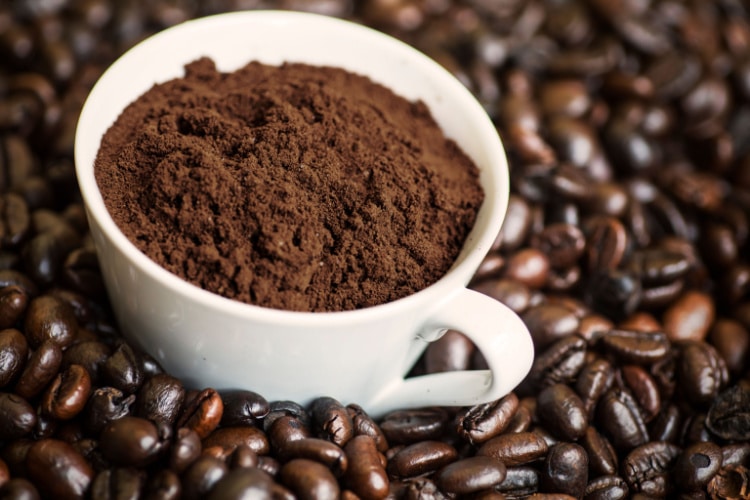
One of the best options for substituting espresso powder in chocolate sweets or spice rubs is instant coffee.
Much like espresso powder, instant coffee powder allows you to add coffee flavor to your foods without adding any more liquid.
Based on the brand, espresso could include a little bit more caffeine than the varieties of instant coffee. The usual dose of caffeine in instant coffee is 67 mg, compared to 58–185 mg in espresso.
Espresso powder usually has a bitter flavor, whereas instant coffee can also be bitter but with a slightly sour or sweet aftertaste, depending on whether it contains milk or sugar and the type of coffee beans used.
Either way, don’t go overboard. You don’t want coffee to be the main flavor in your dish, so a teaspoon of it, which constitutes a 1:1 ratio to espresso powder, will only improve the other ingredients.
Natural Cocoa Powder
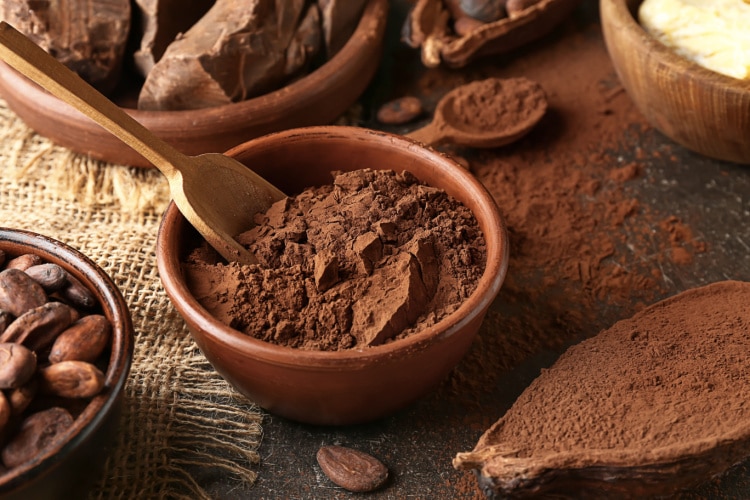
Cocoa powder is made of dried and powdered cocoa solids.
In the manufacturing process, “natural” denotes that the powder hasn’t undergone any processing other than the initial separation of the cocoa butter from the cocoa nibs. This makes it different from, for example, Dutch-processed cocoa, which we’ll talk about in a bit.
You can often learn whether the cocoa powder is natural by looking for branding such as “pure cocoa powder” or “unsweetened cocoa powder.”
Cocoa powder contains very low levels of caffeine, but it does have a similar bitter aroma, and it’s used to add flavor to sweet and sour sweets and baked goods — just like espresso powder.
Cocoa powder is often stirred into the other dry ingredients, and it turns an entire batch of batter a deep shade of brown when moistened, releasing a rich, enticing aroma.
If you want to avoid a caffeine kick in your recipes, however minor it is, cocoa powder is the perfect substitute for espresso powder. Use it in a 1:1 ratio.
Brewed Coffee
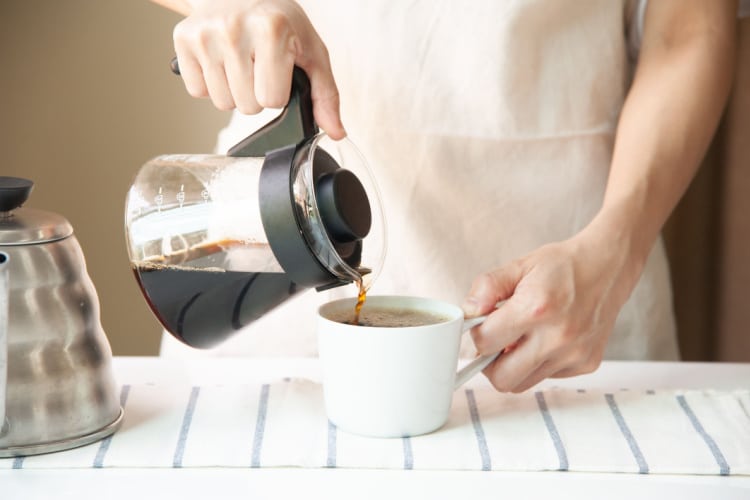
While espresso powder is a great addition to our kitchen cabinets; brewed coffee is far easier to find. “Brewed” simply refers to the preparation method rather than the coffee type, so any coffee will do.
This type of coffee is made by adding boiling water to ground coffee beans through a filter or a percolator.
The potency of brewed coffee, again, depends on the coffee type, but this variety is usually not as potent as espresso. On average, each ounce of brewed coffee contains 12 to 16 milligrams of caffeine, depending on the brand.
When substituting espresso powder for brewed coffee, don’t add too much liquid to your batter. Instead, substitute your freshly brewed coffee with any water or milk that the recipe specifies. This way, the ratio of liquid to dry ingredients will not change.
Ground Espresso
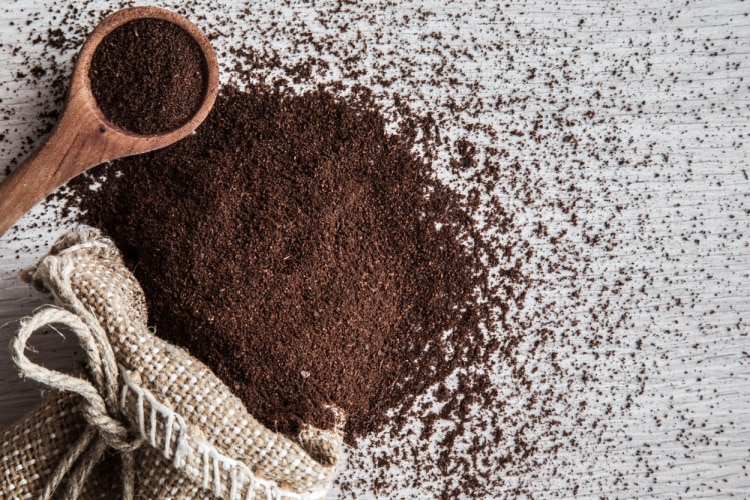
Espresso grounds are much coarser than espresso powder, making them the ideal replacement for coffee lovers who prefer something milder but still flavorful.
Coarseness is what gives ground espresso a mild taste. When coffee is more finely ground, its taste intensifies, and its caffeine content increases. As a result, ground espresso may deliver a weaker flavor and not a very strong caffeine kick.
If you want a strong espresso flavor in your recipes, feel free to increase the ratio by half a teaspoon, but if you are a fan of its mild flavor, use it in a 1:1 ratio. Also, if possible, make sure to mill the granules so that they’re even finer and resemble espresso powder, which will help you mix the powder with the other components more easily.
Brewed Espresso

Similar to brewed coffee, you can simply substitute espresso powder for brewed espresso. Depending on the brand and type of coffee beans, espresso may be stronger and more concentrated than brewed coffee.
However, since it’s mixed with water, you might need to slightly alter the quantity your recipe calls for to make sure the texture remains intact and doesn’t become watery. The best way to do this is to leave out some of the milk or water that your recipe calls for.
Brewed espresso is an excellent substitute with no obvious negatives — just be careful with whatever additional liquid you add to your mixture.
Dutch-Processed Cocoa Powder
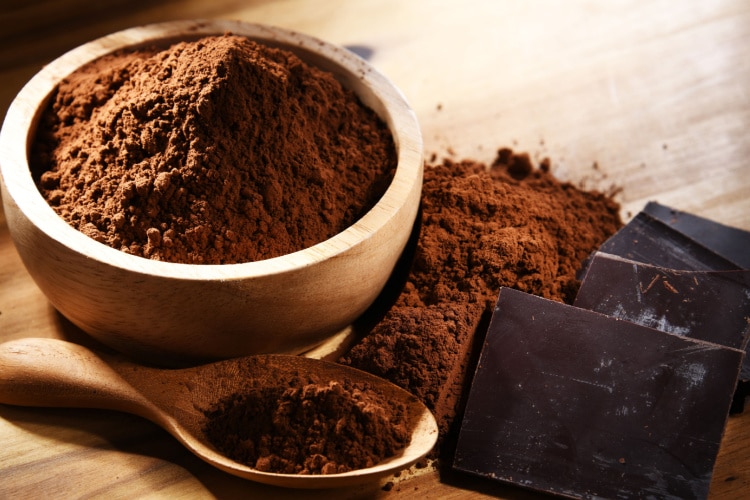
Soaking cocoa beans in an alkali solution yields Dutch-processed cocoa powder. It’s a technique that was developed in the 1800s as a way to balance the acidity and lessen the bitterness of cocoa. This processing step is what makes Dutch-processed cocoa different from the natural cocoa powder we mentioned earlier.
If you’re cooking a chocolate dessert, it’s a good idea to use Dutch-processed cocoa instead of instant espresso. Dutch-processed cocoa is darker than natural cocoa powder, and its color is very close to that of espresso powder, so your finished dessert won’t change its color.
The texture of this cocoa powder is also worth noting. It’s fine and quite comparable to espresso powder, so it won’t alter the consistency of your culinary delights.
In terms of flavor, this variety of cocoa powder has a rich chocolate taste that’s somewhat bitter but not as much as natural cocoa powder. As a result, this can be the ideal ingredient for a chocolate treat since it will deepen the chocolate flavor but give it bitter notes similar to those in espresso.
Popular Recipes That Call for Espresso Powder
Believe it or not, espresso powder has more than one use. With a plethora of culinary options, you can use espresso to take your snacks and meals to a whole different level.
Espresso Coffee Butter
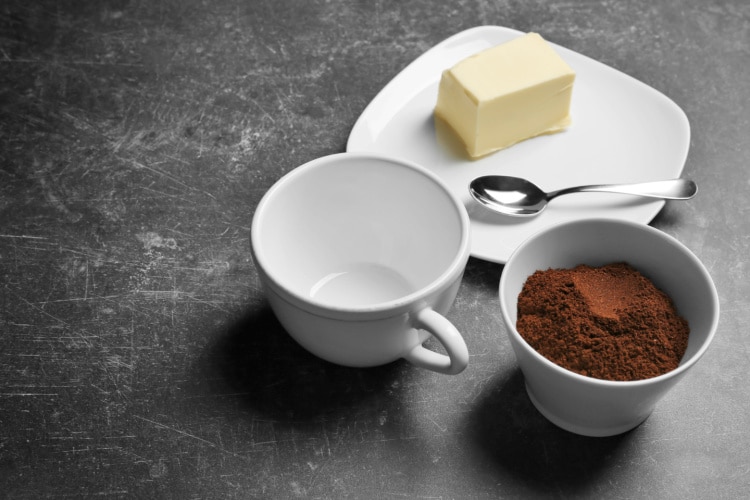
If you’ve never considered that you could create homemade coffee butter, now it’s the time to do so.
This breakfast condiment is made with espresso powder, powdered sugar, and butter. You can spread it over toast, pancakes, or bagels, or just stir a tablespoon into your porridge. It’s a breakfast and morning coffee fix served in one bowl.
Espresso Coffee Jelly
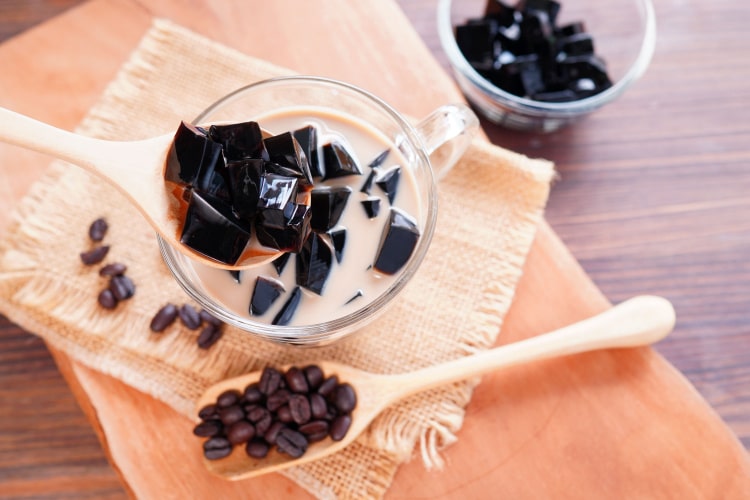
Do you want to improve your coffee beverages or need ideas for a creative dessert? Try making coffee jelly using your favorite espresso brand.
In Japan, coffee jelly is a popular delicacy. It has a jiggly texture and a strong coffee taste. The procedure is simple and fast, considering the time required to cool it. Whipped cream is a popular addition to this recipe, although it’s not your only choice. You can also use almonds or lemon zest.
Espresso Coffee Braised Roast Beef
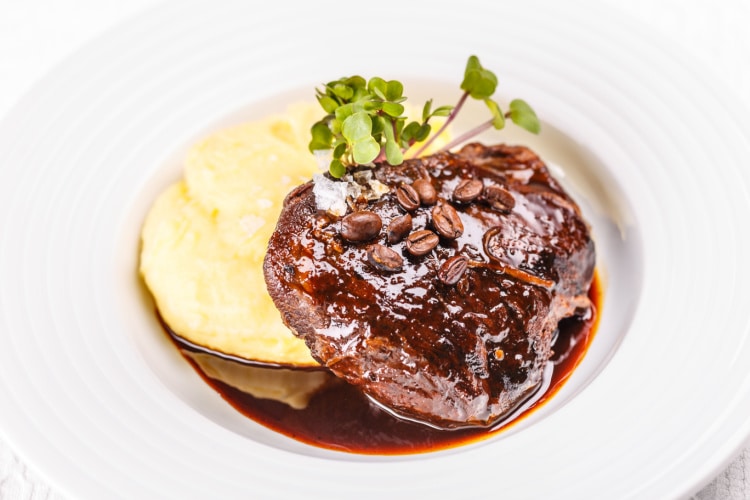
Coffee braised roast beef is a great delicacy that benefits from gravy made with coffee. In a nutshell, you need to gently cook a piece of steak in espresso coffee, as weird as that might sound.
The good news is that it won’t overpower the qualities of the steak but rather enhance them. If you want to try it out, we suggest pairing it with creamy mashed potatoes as a side dish and adding the coffee gravy on top. It will deliver a taste like no other!
Coffee Bean-Baked Carrots
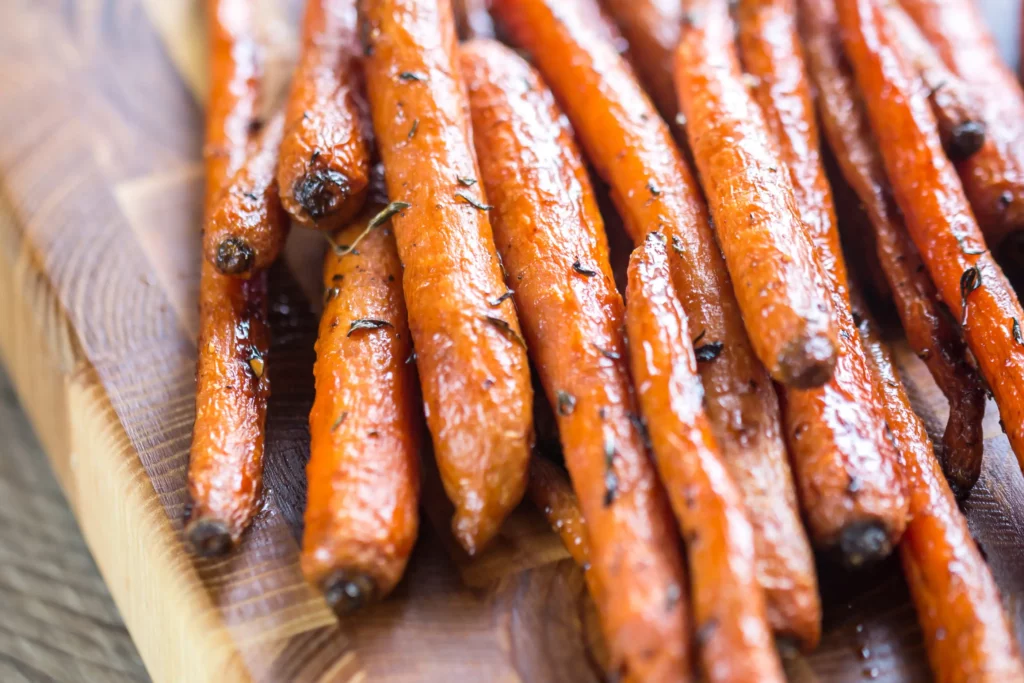
Many people roast carrots, but few bake them with coffee beans. When cooked with espresso beans, carrots pick up a trace of coffee flavor while also releasing their natural sweetness.
Coffee bean-baked carrots pair well with other foods that are also cooked slowly, such as the previously mentioned coffee-braised roast beef. The result of your effort will be tasty, delicate carrots with a distinctive coffee flavor.
Espresso Chocolate Doughnuts
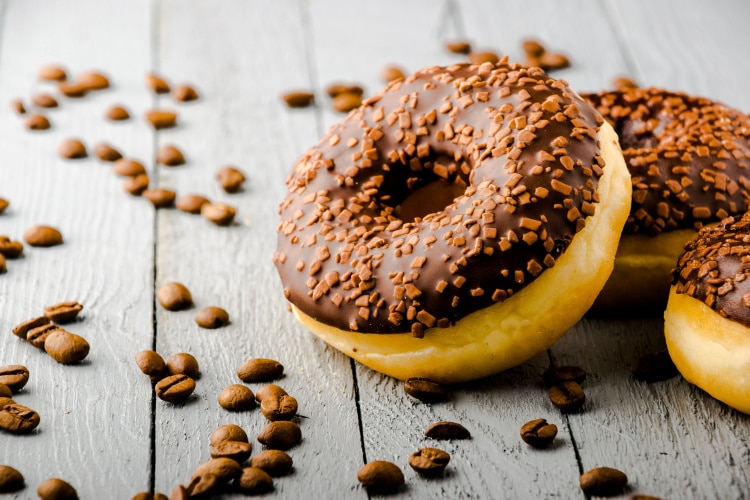
We’ve combined our two favorite treats — coffee and chocolate doughnuts — in one recipe! Espresso is the main star of the show, as it’s present in the doughnut filling and in the glaze.
As for the brand, a standard espresso is good enough, but a hazelnut-flavored espresso can elevate the recipe to new heights! The only issue is holding off on eating the baked goods until the glaze has settled. But believe us, it’s worth waiting for.
Conclusion
While none of the alternatives we recommend are the exact replica of espresso powder; they are all lovely and work well enough as alternatives to espresso powder to prevent you from having to race to the store or cancel your dessert plans.
If you ask us, instant coffee powder is the closest substitute to espresso. However, if some of you are aiming for something more cocoa-flavored, we totally recommend Dutch-processed cocoa powder.
Just be mindful of the ratios, and you are good to go. If you need some culinary inspiration, pick some of our top recipe ideas. Happy cooking!


